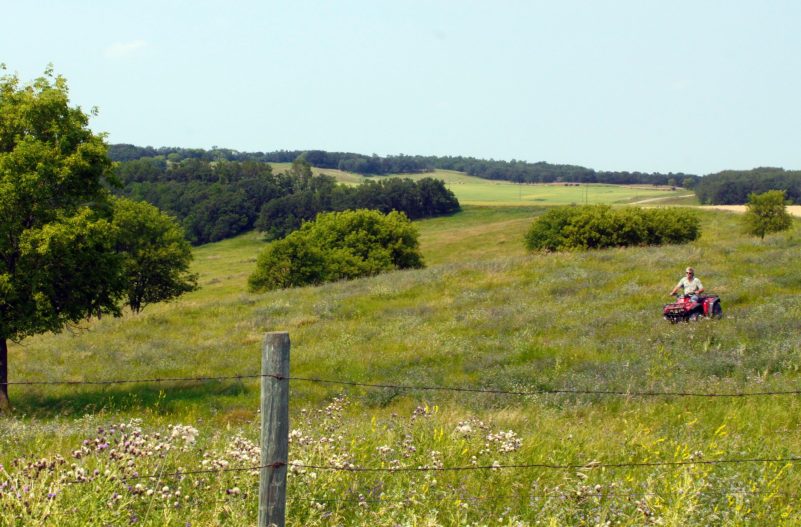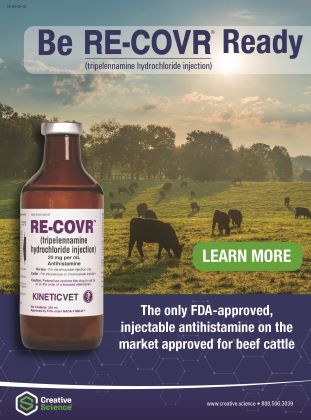Establishing Productive Pastures

Pasture is a key resource for most dairy operations across our country. We use it either directly for pasture or for hay and rely on the ground as a key component of our livelihood. For dairy producers, maintaining high-quality forage is essential for ensuring healthy herds, optimizing milk production, and reducing overall feed costs.
By strategically implementing pasture seeding, dairy producers can improve forage quality and ensure consistent feed availability year-round. From selecting the right seed varieties to understanding optimal planting times, pasture seeding plays a critical role in balancing the environmental and economic demands of modern dairy farming. This paper explores the techniques, benefits, and long-term impact of effective pasture seeding, emphasizing its importance as a key management practice for thriving dairy operations. We were able to get some advice from Shelby Gruss, Iowa State University Extension and Outreach’s, forage specialist. Gruss has roots in the Midwest, as she grew up in Indiana, got her PhD from Purdue University, and has extensive experience with pasture, cool-season, and warm-season grasses. Gruss covers anything forage related including pastures, silage, and hay production.
Frost Seeding
When it comes to frost seeding, Gruss explains, “I see frost seeding used a lot. Not necessarily in the establishment year, but trying to incorporate more legumes into the pasture. If you’re going to be establishing a new pasture, frost feeding is typically not as, consistent as drilling to make sure that you’re going to get a good stand. However, I see frost feeding used quite a bit, especially when we’re trying to get those legumes back in the pasture.” Generally, when we are trying to get legumes back into pastures, we are focusing on clovers, alfalfa, and birdsfoot trefoil. In a dairy operation, we see a boost in the forage yields and protein content when legumes are in the mixture. Gruss goes on to say, “A lot of times I see clovers, especially red clover, used a lot. Red clover is generally a cheaper seed. So, if the frost seeding fails, you’re not out so much economically. Small-seeded crops are the ones that do well with frost seeding.”
Best Practices to Establish a Thriving Pasture
According to Gruss, “There’s a lot that goes into establishing a pasture. One of the big things is making sure your pH and fertility are there. If your pH is off, you’re going to have a pretty poor establishment.” You can take soil samples yourself and have them sent off for analysis or, you can hire someone. Generally, co-ops will offer this service as well as analysis and recommendations. However, as Gruss pointed out, having your pH in an optimal range is first and foremost important. Our pH controls nutrient availability to the plants.
“Then, as you work into actually getting the seedbed prepared, it’s quite a few steps typically. Generally, you’re going from disking to rolling and then planting. So, if you’re not being careful about each step, to prepare that seedbed properly, you can run into a lot of issues. If you don’t roll, for example, or cultipack, you’re not going to have a firm seed bed. If you don’t have a firm seed bed, a lot of our forages are very small seeded, and so they generally will, float deeper into the soil profile, and so you’re going to have poor establishment.” Clovers and alfalfas are small seeds and only have a little bit of stored energy ready to drive the plant toward the surface. By burying the seed too deep in the soil profile, that seed will be unable to reach the surface and thrive.
Gruss says, “If you do have a failed seeding, you need to take time to figure out what the problem was. If it was a problem, like pH, and you just decide to plant again, the pH hasn’t changed until we fix it.” You will have to fix the pH before planting to get different results. Gruss goes on to say, “Making sure that we take the time to figure out what those problems were for that failure [is crucial]”.
Weed Control
Cattle are undoubtedly hard on the ground. In a few years, you will be battling weeds, but it’s easier if you manage the weeds the best you can before planting. Gruss states, “One other thing, when you’re establishing [your pasture], make sure you have your weeds under control. Especially in pastures where we have, legumes and grasses planted together. There are not too many options that we have for herbicide control after it’s established. So, making sure we’re going into a clean field is really important to minimize any competition for later.”
Grazing & Haying New Seeding
You’ve put int a lot of time and effort to get your pasture in good shape, and you want to keep it that way as long as you can. Part of that comes to how you manage the new seeding. According to Gruss, “You want to make sure that your stand is established enough that when the animal comes through and starts grazing it, they’re not just going to uproot the plant.” Gruss goes on to recommend performing an inspection prior to grazing. She recommends doing a “pluck test” because, as she explains, once you uproot it, that plant’s not regrowing.” She goes on to explain the process of the pluck test: “You kind of walk through the pasture, you grab a handful of the grass and see if you can yank it up. If it tears off by the leaf and doesn’t uproot the plant, then really that’s a time frame that you can start lightly grazing it. We don’t want to overgraze that first year. We don’t want to overgraze at all, but especially that first year. You could really put a hindrance on the plant.” If you can uproot the plant easily, then you should wait a little to get those roots established. The first year the grasses are putting energy into building their root systems, so overgrazing or grazing too early can hinder the root development, and actually decrease the production of your pasture.
If you’re still wondering what that might look like, Gruss helps us identify that, “Generally 8-10 inches would be a good time frame to start grazing. Give that seeding time to establish.
When it comes to haying, newly established pastures. Gruss advises, “It’s kind of a balance of when do I have enough growth that I can start seeing it economically coming through, and actually haying it fully.
Gruss goes on to state, “Sometimes haying it can help knock down some weeds before they start producing seed heads in that first year. So, giving it time to grow, eight to ten inches tall. You’re probably not going to see seed head development in the first year. Generally, when people follow their first hay cutting for the year, they’re waiting until the boot stage to cut it. We’re not going to have that boot stage in our first year of planting for most cases.” So, when it comes to making a decision on haying, Gruss recommends, “Give it enough time and growth to make sure it’s economically worth you going out there and cutting it and haying it.”
When it comes to pasture management, seeding is a cornerstone of sustainable dairy farming. However, without proper seeding practices, pastures can quickly become overgrazed, and weed-infested, and you’re losing both quality and production on those acres. Hay production is absolutely essential for the success and sustainability of any dairy farm. Growing your own hay can save you a bundle compared to buying feed. Plus, it gives you more control—you can tailor your hay to match your herd’s needs, making your feeding program even more efficient. Investing in hay production isn’t just good for your cows; it’s good for your farm’s future. By focusing on growing and managing high-quality hay, you’re setting your herd—and your business—up for long-term success.
By Jessica Graham




